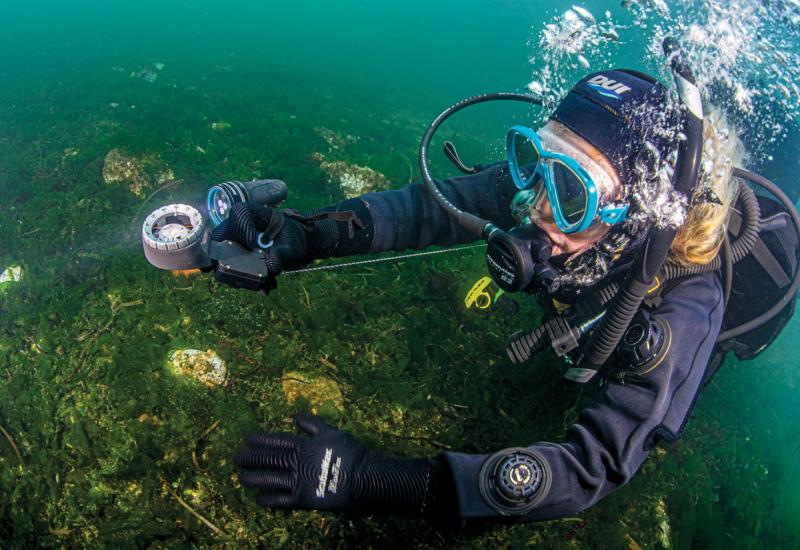Terrible Beauty: 11 Risky Reef Dwellers
Divers around the world often hear the message: “look, but don’t touch.” For the most part, this warning is given out of concern for the health of the creatures under the sea — most especially corals which are so very fragile and are easily harmed or destroyed by human contact. As visitors to the aquatic world, we have a responsibility to ensure that our immersion does not cause harm to the life that flourishes there.
But there are a few creatures under the sea that are also very toxic, and occasionally fatal, to humans who come into contact with them. It’s good to know what these things are, and where they are most commonly found.
Photographers are most especially at risk, as they tend to get close to the reef to capture their images, and inadvertent contact does happen from time to time, even to the most careful divers. But any diver, especially those with poor buoyancy control, are in peril if they contact one of several varieties of fire corals, as well as any of the creatures that are featured in this gallery.
I have long been a fan of the muck stick — a narrow metal pointer — that is used as the touch point on a reef when setting up for an image or when stopping to take a closer look at something. When placed carefully on a bare spot on the reef or in the sand, it can create a pivot point so that no part of the diver, including the fins, ever touches the reef. It also can act as a monopod for a camera, again keeping it and its operator clear of the reef. Being clear of the reef means a zero chance of an envenomation from reef dwellers.
Interestingly, some of these toxic creatures are brightly colored and patterned, possibly as a warning to other creatures to stay clear. Others are highly camouflaged and are next to impossible to see. Stonefish are in this category — they seriously look like a rock (and so are very difficult to photograph), and don’t move unless startled. Coming into contact with a stonefish can be a very serious, and possibly fatal, injury.
I am sharing just a few of several creatures and organisms that can inflict a painful wound to divers. The first aid measures required for each kind of envenomation differ. In serious cases, having DAN insurance, and contacting them as soon as possible after an incident for treatment suggestions, is the best course of action.
More from Judy G:
Meeting Mr. Big | Cold Water Rocks! | Where in the World is Wallace?
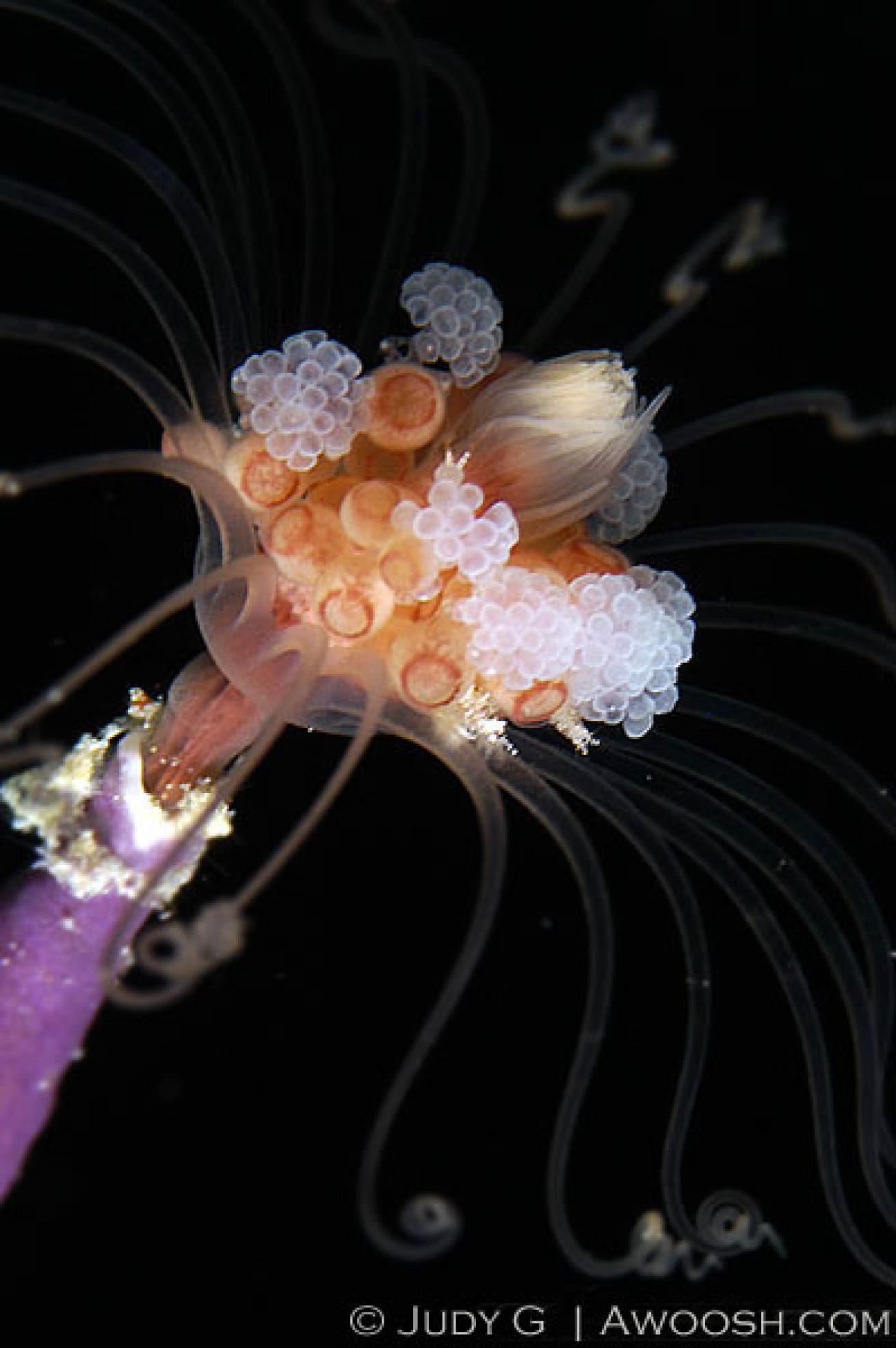
Judy G
In many locations the reef is covered by little plant-like creatures — they can look like tiny ferns or flowers and can seem quite innocuous. But hydroids, like jellyfish, can pack a pretty big punch. Typically, the "fronds" of the fern-like structures are covered in stinging cells (nematocysts), and any kind of contact will cause them to release. The resulting welts on human skin are painful, blistering, and may take quite some time to heal. Special care should be taken when grasping ropes permanently attached to moorings as they can be encrusted with hydroids. Many hydroids grow in colonies. This particular hydroid, which was quite tiny (about half an inch high), is of a solitary variety. I captured this image in Grand Cayman.
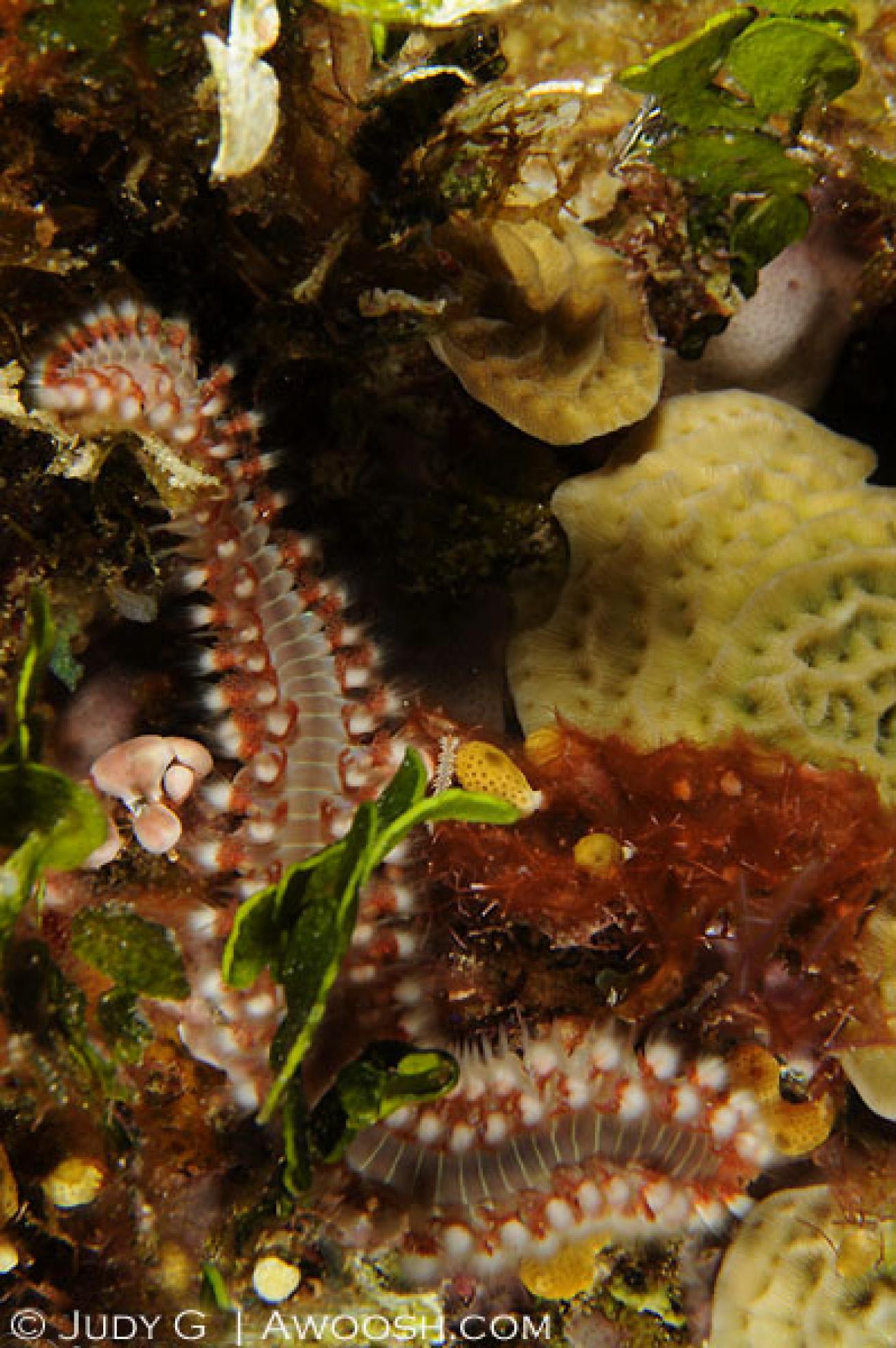
Judy G
There are several varieties of fire worms found in the Caribbean and the Indo Pacific. These caterpillar-like creatures are also found in the Mediterranean Sea, and likely in many other tropical and sub-tropical ocean settings as well. They grow to be about six inches long. As their name suggests, fire worms are painful to touch. Their bristles are coated in venom, and like sea urchins, the tips may break off when contacting skin and embed themselves, requiring treatment. I captured this image of a bearded fire worm in Cozumel.
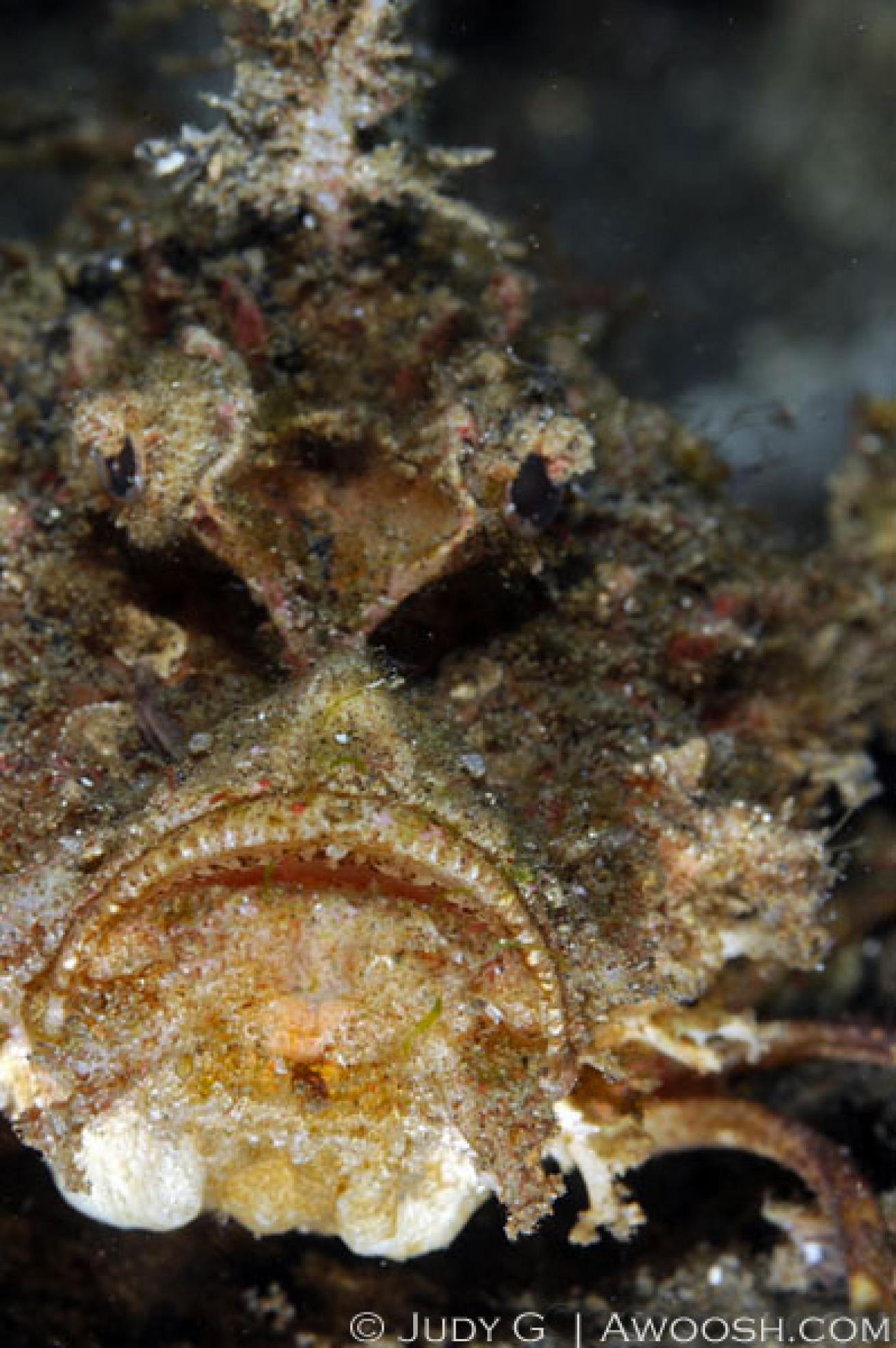
Judy G
This fish is a member of the stonefish family. A nocturnal fish, it crawls along the reef on weird leg-like appendages at night as it hunts. Its dorsal spines are highly venomous and will deliver a serious sting on contact.
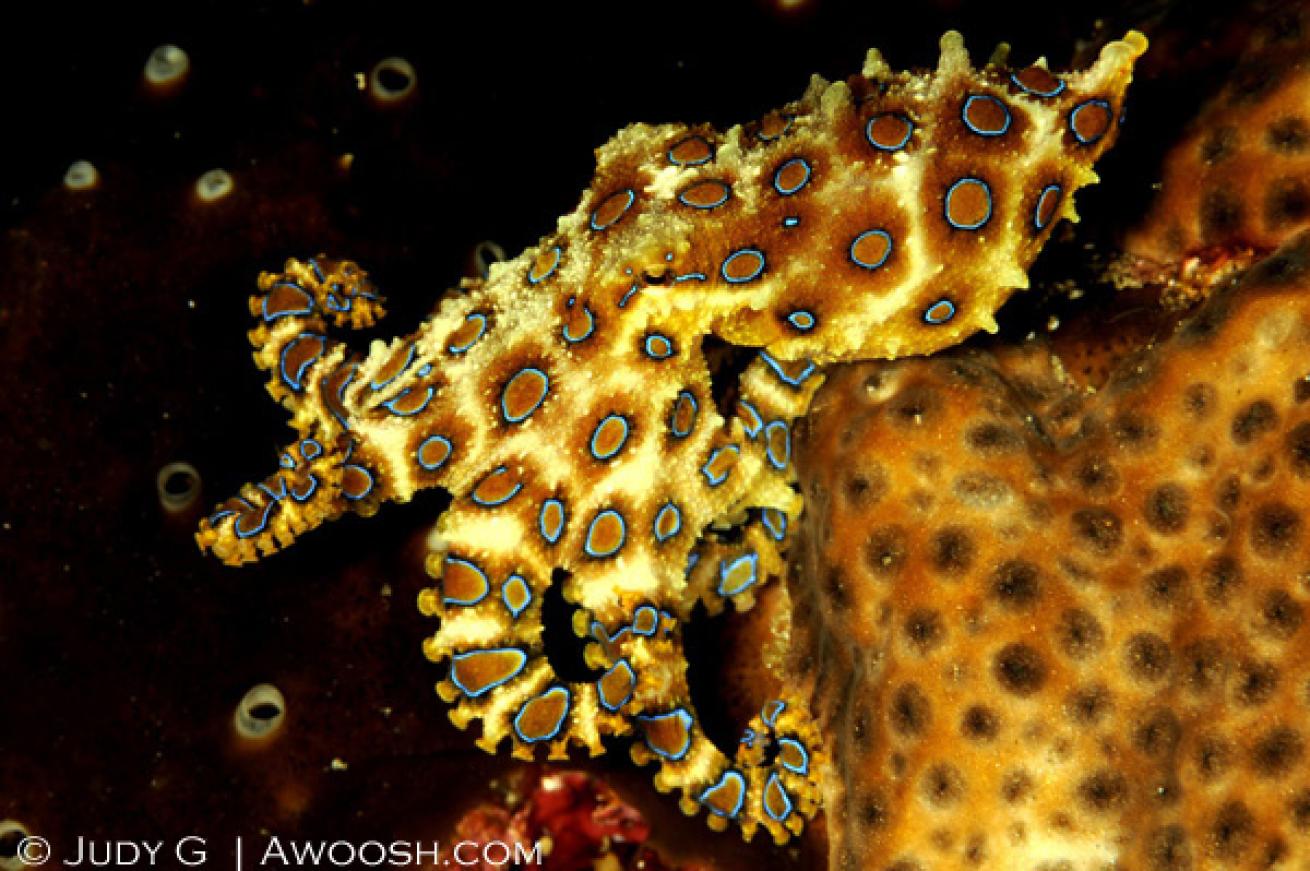
Judy G
This little beauty is one of the most toxic creatures in the ocean, with venom that is reported to be 1,200 times more toxic than cyanide. The venom is delivered via a bite from the animal’s beak. These octopuses are quite small — about 2.5 inches long. This octopus, like its cousins, is able to camouflage itself quite well on the reef. When agitated or excited it flashes its iridescent blue rings, from which it gets its name. This octopus was photographed in the Banda Sea, in Indonesia. They are fairly common in the tropical south Pacific ocean.
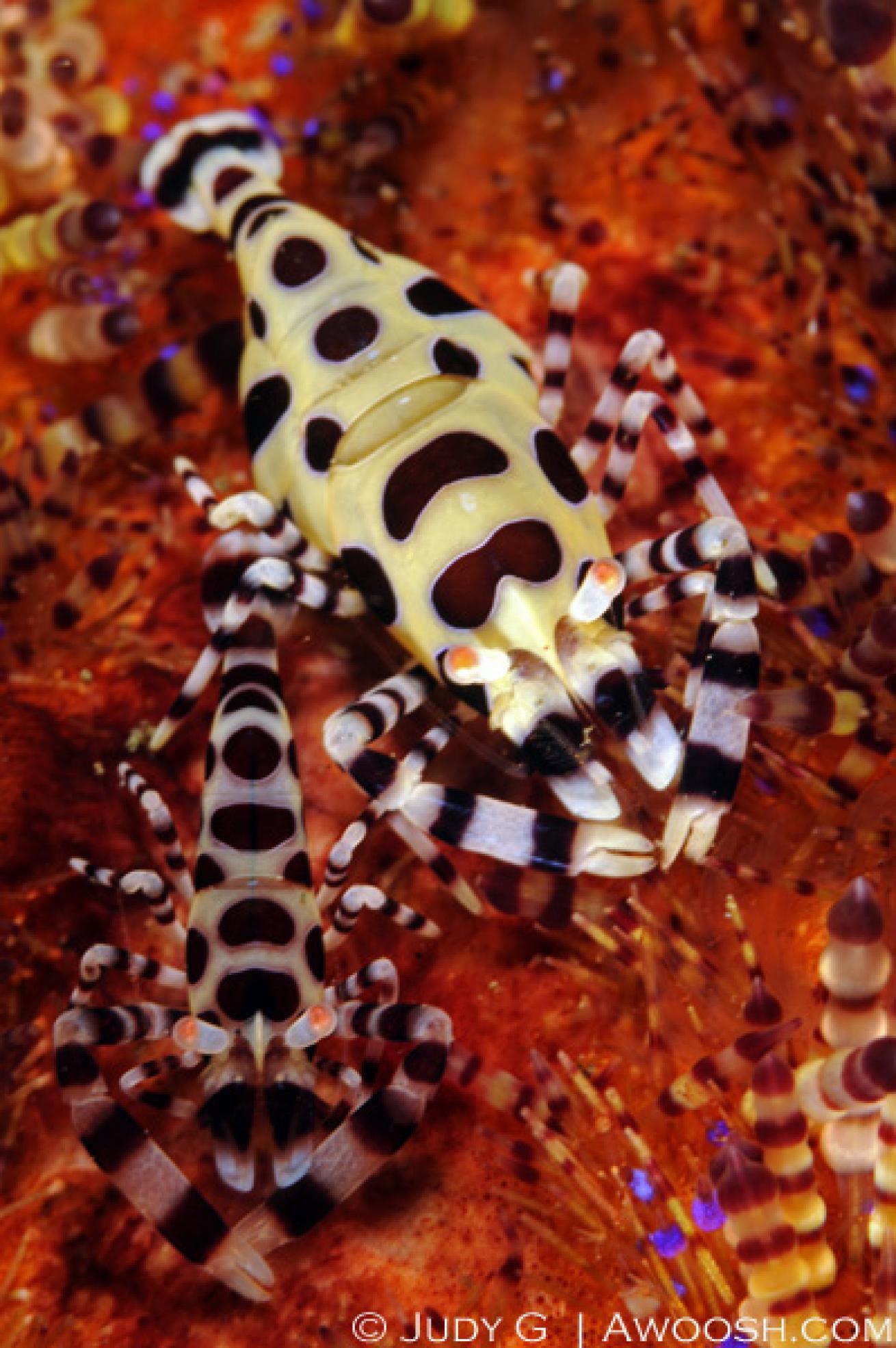
Judy G
These beautiful, wildly colorful and quite large urchins are found in Asia. Photographers in the know like to have a close look at these urchins, searching for Coleman Shrimp (like those in this picture), squat lobsters, and a few other small creatures that like to make their homes on the surface of these venomous creatures. These Coleman shrimp are about half an inch long, meaning that a photographer or observer will have to get very close to the urchin to see them. The shrimp (the female is the larger of the two) have clear-cut a small site on the urchin, and live there. The urchin's spines are covered with toxins, and can break off and embed themselves in flesh. Contact will be extremely painful, so great care should be taken.
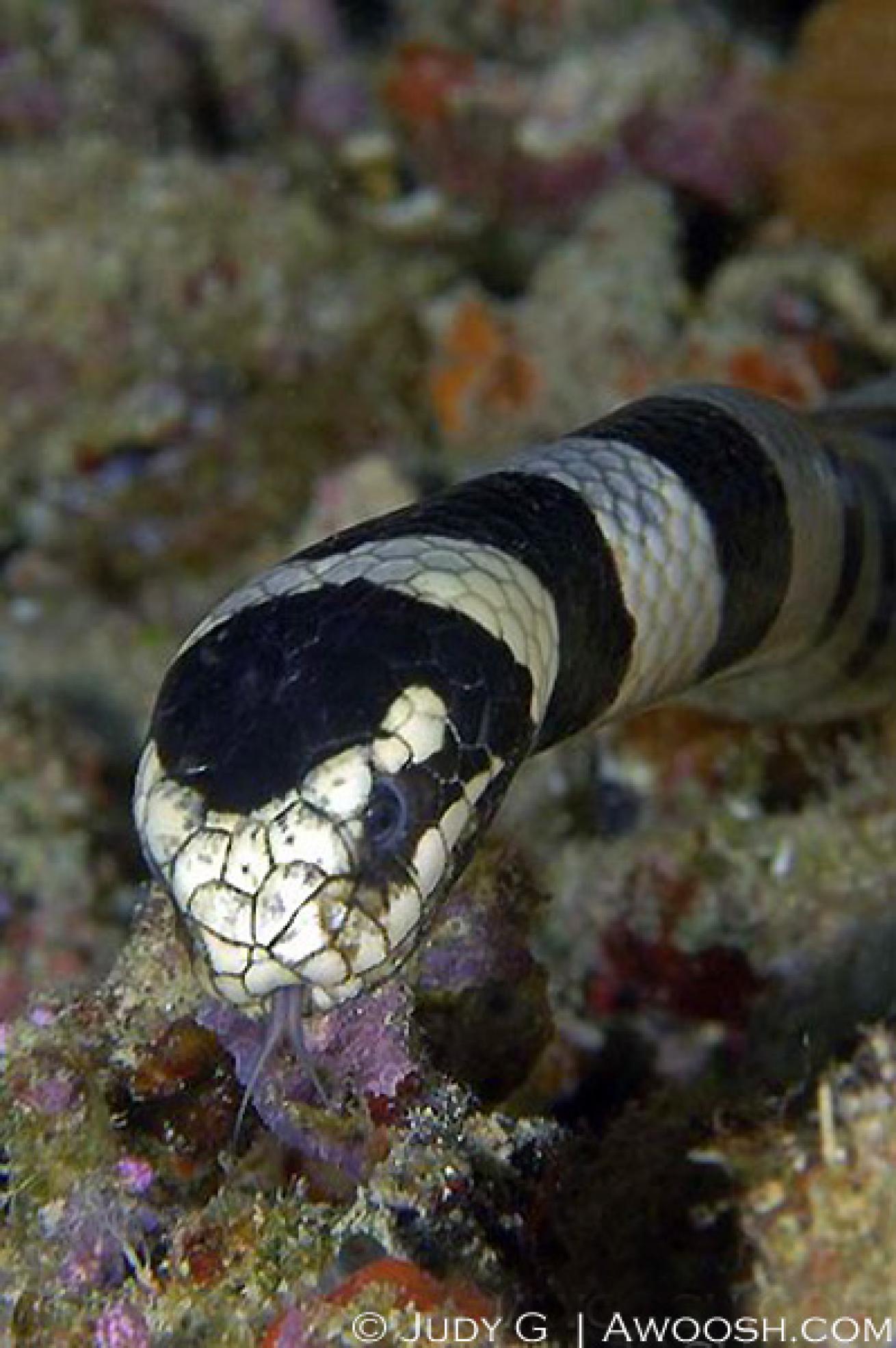
Judy G
Okay, I’ll admit it — like Indiana Jones, I hate snakes, and dreaded encountering them underwater. When I first spotted this one hunting along the reef in Fiji, I shuddered, but curiosity got the better of me, and I eventually went in for a closer look. Although these are highly venomous creatures, they are not known to be aggressive, and there is little documentation of bites to humans — and most of those are recorded as bites to fishermen who attempted to remove them from their nets. Even so, this is a creature to respect when underwater, and on the surface. These are amphibious creatures that breathe air and drink fresh water, and they are known to slither out of the sea to curl up on docks and boats. Yikes!
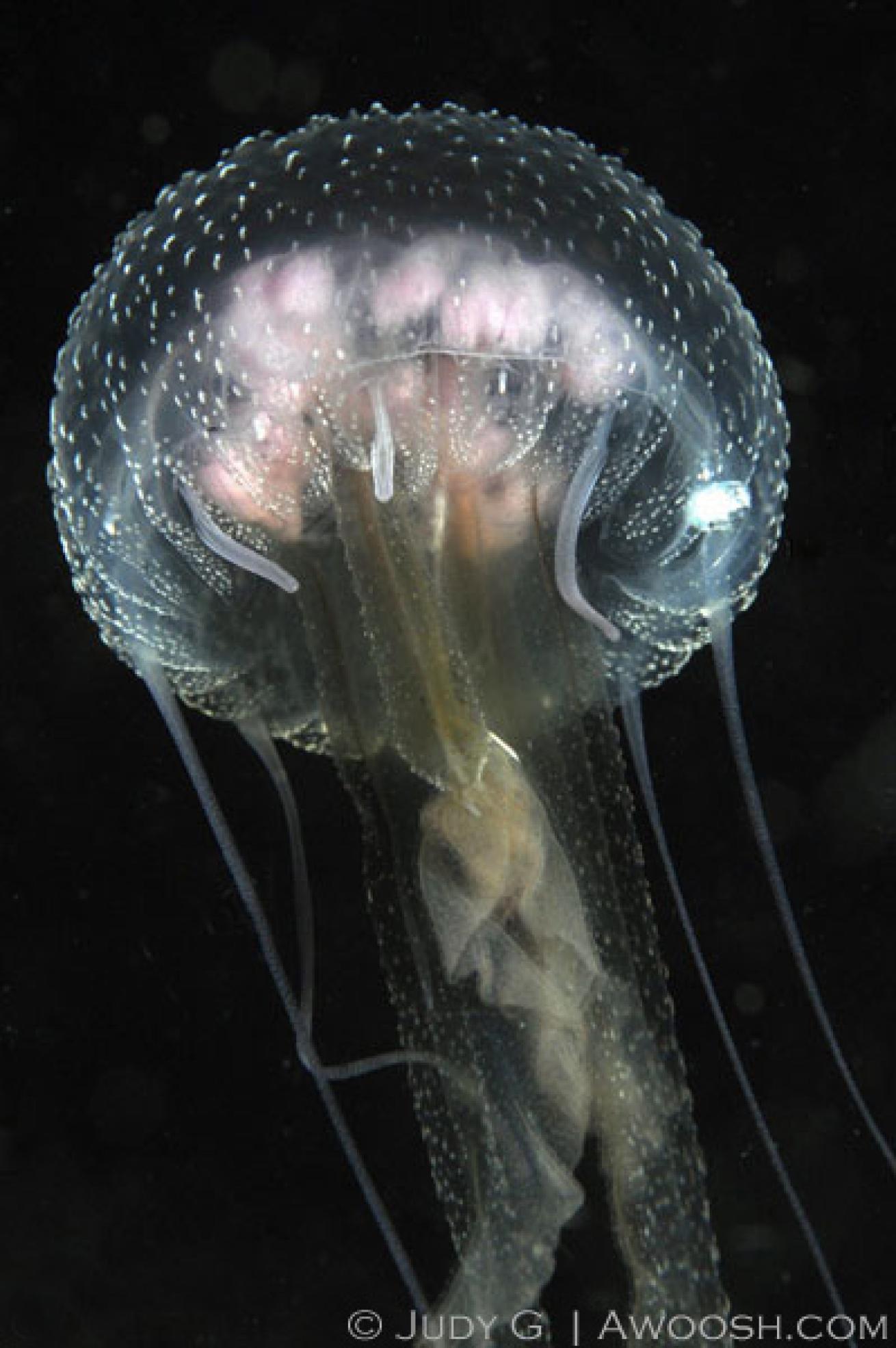
Judy G
Jellies appear in oceans around the world, and in a few land-locked lakes in Asia. Almost all jellies pack a painful sting, which is delivered on contact via nematocysts on their tentacles. Some jellies are quite compact (for example the moon jelly), while others have tentacles that trail several feet behind the animal. And a very tiny, almost invisible to the eye jelly, the dreaded Irukandii, which is common off the northeast coast of Australia, is extremely toxic and sometimes fatal. Box jellies are also very dangerous. Other jellies can inflict a painful sting, but are not usually fatal. Care should be taken when approaching jellies to have a closer look or photograph them, as their trailing tentacles are so slim and translucent that they can be difficult to see.
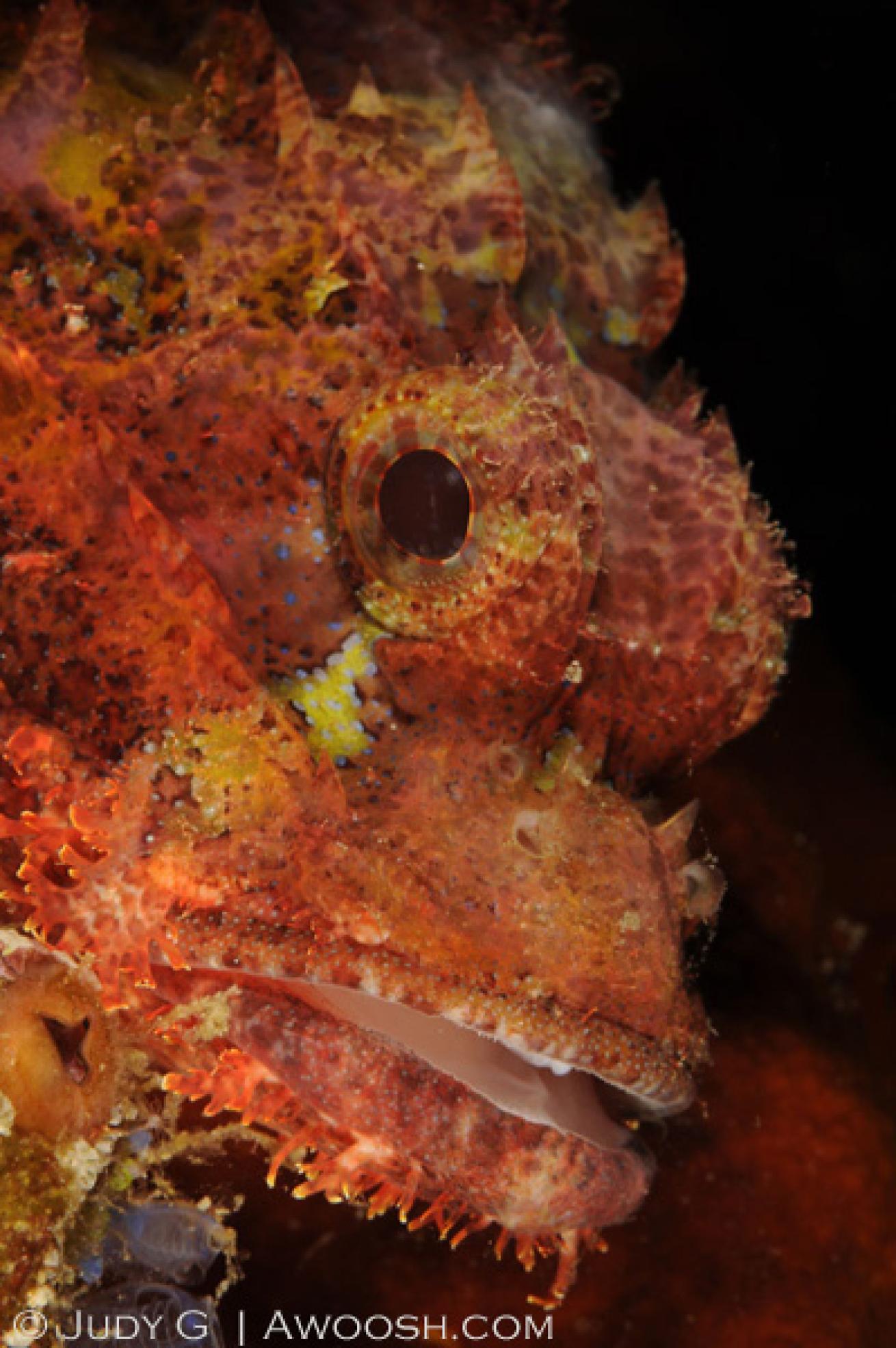
Judy G
This beautiful fish comes from a large family of scorpion fishes — so called because of the very painful injuries they can inflict with their spines, which are coated with venomous mucus. These fish are masters of disguise, and can camouflage themselves artfully to blend into the reef. As bottom dwellers, they will only swim when disturbed.
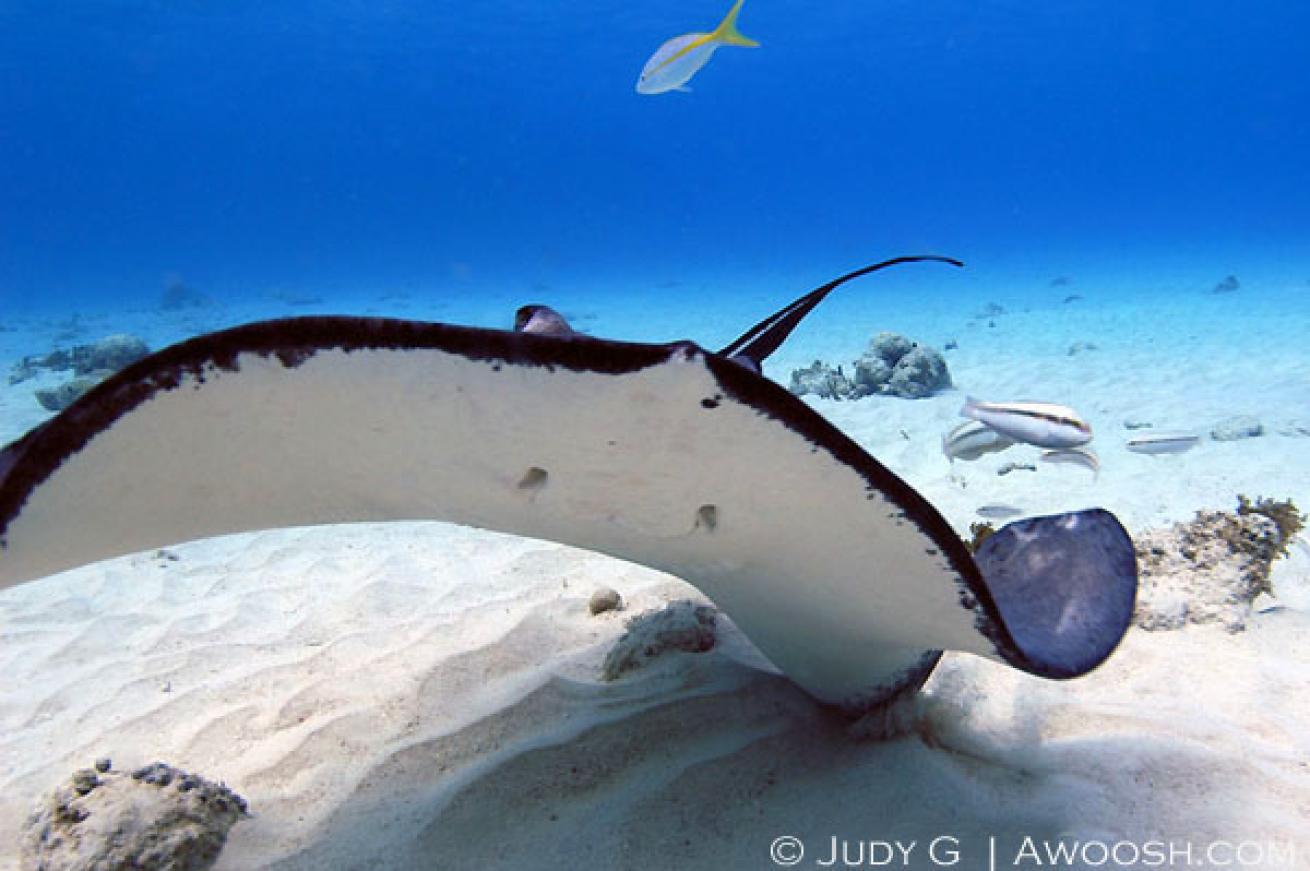
Judy G
The stingray is a very common reef creature and can be seen in many locations around the planet. Stingrays got a bad rap when Steve Irwin was tragically killed by a tail strike through his heart while diving with them in Australia, but generally, these are quite benign, bottom-dwelling creatures that would rather fly away than fight. Steve Irwin’s mistake was coming up above and behind the creature that killed him — the same approach that would be made by their primary predator — sharks. The tail barb is venomous and can deliver a nasty sting. The people most at risk for being spiked by a stingray are those walking across sandy bottoms. Divers and photographers should approach from the stingray's front or sides.
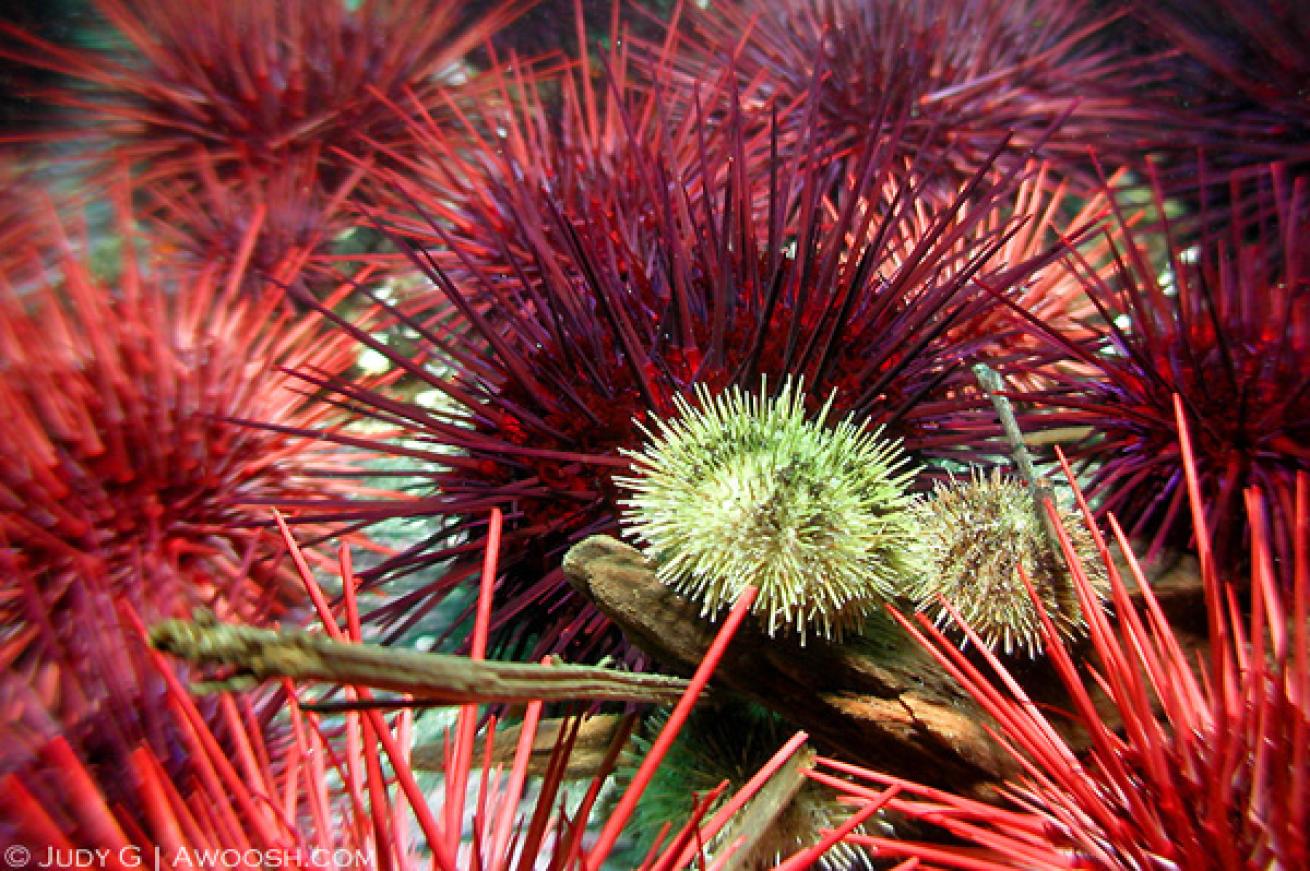
Judy G
Sea urchins are common sites on reefs around the world. These colorful urchins are of a cold water variety. I captured this image in Discovery Passage in British Columbia. Contact causes their venomous spines to penetrate the skin (even through a wetsuit!) and break off at the tips. Removing the spines and treating the envenomation are important steps in healing from this painful experience.
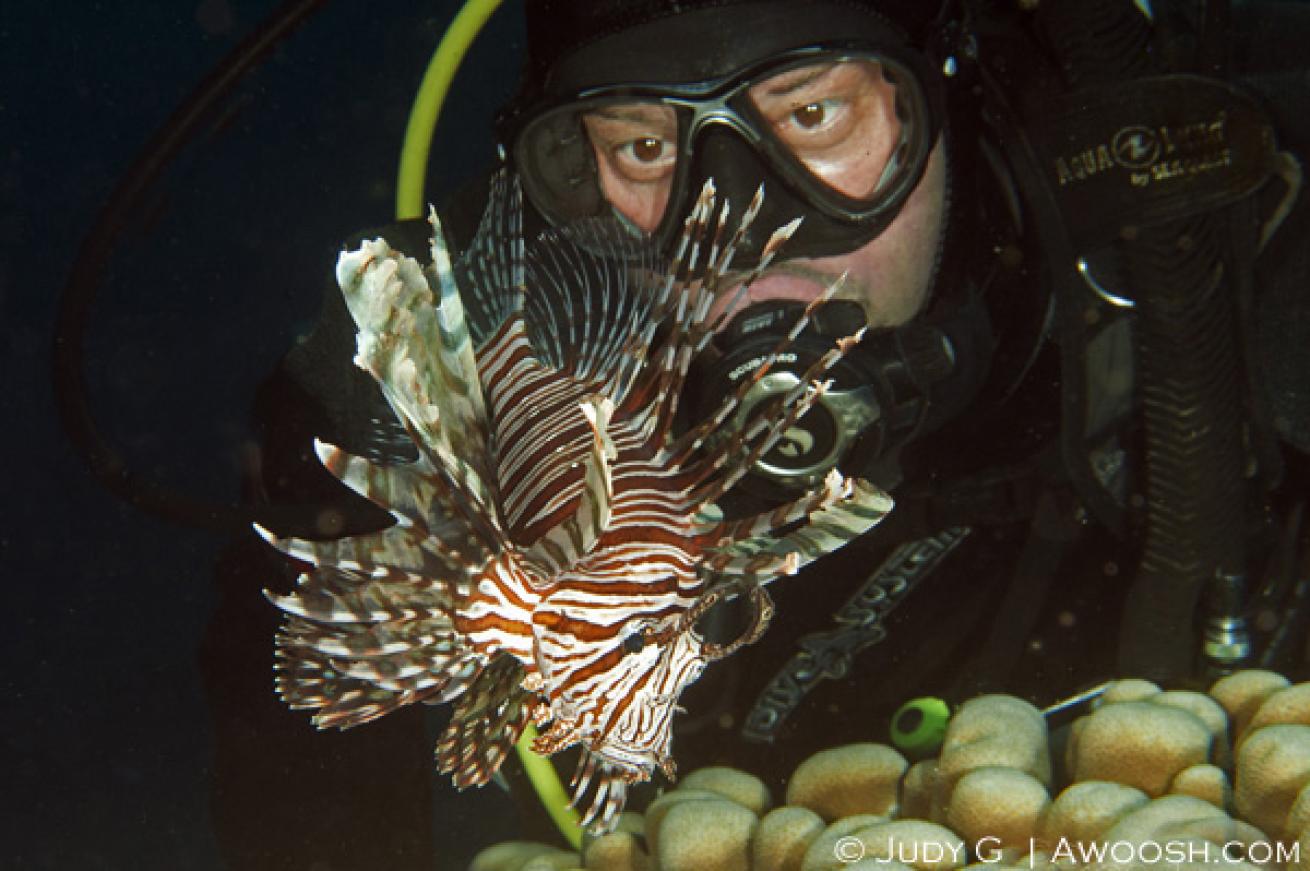
Judy G
Members of the scorpionfish family, lionfish have highly venomous fin tips. As you can see from the photograph, they have numerous rays to their fins. Fortunately, this is a very slow moving fish, and all varieties are colorful and patterned, so they are quite easy to avoid. Lionfish are not endemic to the Caribbean, but are now rampant and can be seen on dive sites at many locations.
Divers around the world often hear the message: “look, but don’t touch.” For the most part, this warning is given out of concern for the health of the creatures under the sea — most especially corals which are so very fragile and are easily harmed or destroyed by human contact. As visitors to the aquatic world, we have a responsibility to ensure that our immersion does not cause harm to the life that flourishes there.
But there are a few creatures under the sea that are also very toxic, and occasionally fatal, to humans who come into contact with them. It’s good to know what these things are, and where they are most commonly found.
Photographers are most especially at risk, as they tend to get close to the reef to capture their images, and inadvertent contact does happen from time to time, even to the most careful divers. But any diver, especially those with poor buoyancy control, are in peril if they contact one of several varieties of fire corals, as well as any of the creatures that are featured in this gallery.
I have long been a fan of the muck stick — a narrow metal pointer — that is used as the touch point on a reef when setting up for an image or when stopping to take a closer look at something. When placed carefully on a bare spot on the reef or in the sand, it can create a pivot point so that no part of the diver, including the fins, ever touches the reef. It also can act as a monopod for a camera, again keeping it and its operator clear of the reef. Being clear of the reef means a zero chance of an envenomation from reef dwellers.
Interestingly, some of these toxic creatures are brightly colored and patterned, possibly as a warning to other creatures to stay clear. Others are highly camouflaged and are next to impossible to see. Stonefish are in this category — they seriously look like a rock (and so are very difficult to photograph), and don’t move unless startled. Coming into contact with a stonefish can be a very serious, and possibly fatal, injury.
I am sharing just a few of several creatures and organisms that can inflict a painful wound to divers. The first aid measures required for each kind of envenomation differ. In serious cases, having DAN insurance, and contacting them as soon as possible after an incident for treatment suggestions, is the best course of action.
More from Judy G:
Meeting Mr. Big | Cold Water Rocks! | Where in the World is Wallace?




